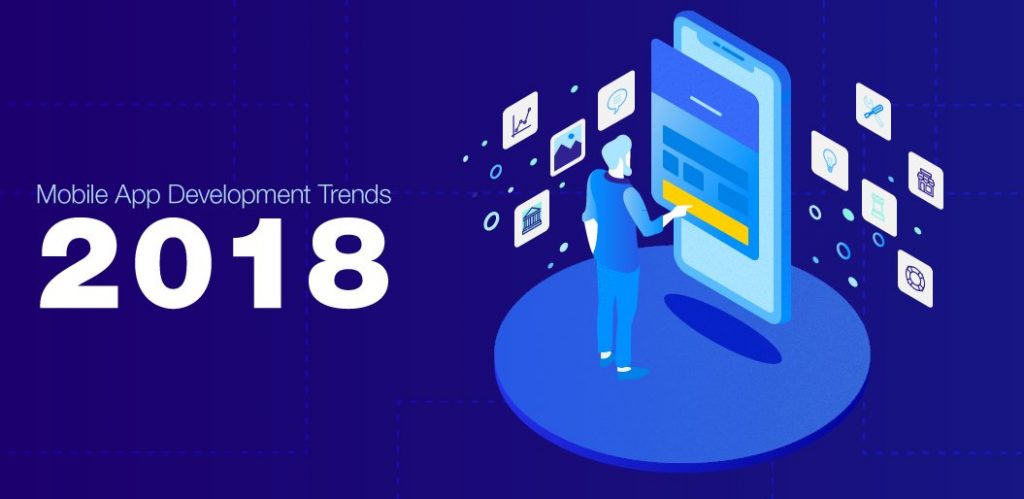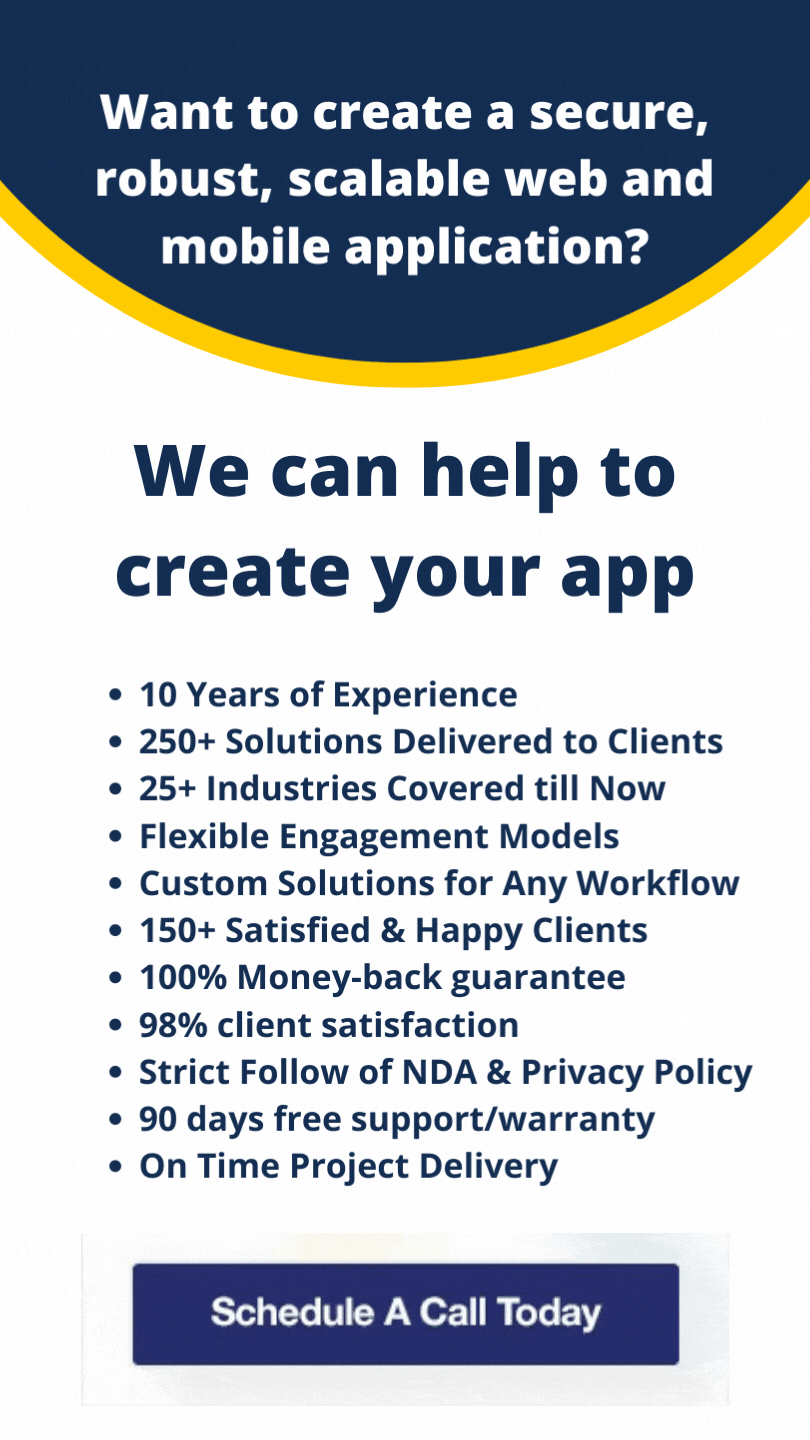In the dynamic landscape of technology, the mobile application industry has emerged as a driving force that reshapes businesses and engages consumers on a profound level. With the ubiquity of smartphones and the increasing reliance on mobile apps, organizations across diverse sectors have recognized the significance of integrating mobile app technology to unlock growth and expand their audience reach. However, the mere adoption of a mobile app development strategy is not sufficient for success; staying updated with the latest trends is essential. Your app should incorporate cutting-edge technical support to captivate a significant share of smartphone users. To navigate this intricate terrain, let’s delve into the top 10 mobile app development trends in 2018.
1. Augmented Reality: Bridging the Real and Virtual Worlds
Augmented Reality (AR) surged to the forefront in 2018, transforming the way users interact with mobile apps. AR enriches the real world by overlaying digital information, offering immersive experiences in various industries like gaming, retail, and education. The technology is leveraged to create engaging content that blends seamlessly with the physical environment, elevating user engagement and interactivity.
2. Wearable Apps: Integrating Technology with Lifestyle
Wearable technology, from smartwatches to fitness trackers, has become an integral part of modern lifestyles. As a result, wearable apps gained prominence in 2018. These apps sync with wearable devices to provide real-time data, monitor health metrics, and offer convenience. Developing wearable apps enhances user experience by delivering personalized insights directly to users’ wrists.
3. Instant Apps: Streamlining Access and Engagement
Instant apps, a breakthrough in mobile app development, enable users to access certain features of an app without installing the entire application. These lightweight versions provide a seamless user experience while conserving device storage. Instant apps garnered attention in 2018 by eliminating barriers to entry, enabling users to engage effortlessly without the commitment of installation.
4. AMP (Accelerated Mobile Pages): Enhancing User Experience
Speed is a paramount consideration in the digital realm, and AMP technology gained traction in 2018 for its role in optimizing mobile web pages for lightning-fast loading. AMP-powered pages prioritize content and streamline design, resulting in reduced bounce rates and enhanced user engagement. Mobile apps integrating AMP principles deliver enhanced performance and user satisfaction.
5. IoT (Internet of Things): Unifying Devices and Applications
The Internet of Things (IoT) continued to reshape the app development landscape in 2018. The integration of IoT technology with mobile apps enables seamless communication and control of interconnected devices. From smart home systems to industrial applications, IoT-powered mobile apps enhance user convenience and operational efficiency.
6. Artificial Intelligence: Pioneering Intelligent Apps
Artificial Intelligence (AI) witnessed significant growth in 2018, driving the development of intelligent mobile apps. AI-powered apps utilize machine learning algorithms to analyze user behavior, personalize experiences, and provide predictive insights. Virtual assistants, chatbots, and recommendation engines are just a few examples of AI’s transformative impact on mobile app development.
7. Cloud Computing: Scaling Applications Seamlessly
Cloud computing remained a game-changer in mobile app development throughout 2018. Cloud-based apps offer scalability, storage flexibility, and collaborative capabilities. By storing data in the cloud, apps can offer seamless synchronization across devices and ensure uninterrupted user experiences, regardless of hardware limitations.
8. Blockchain: Enhancing Security and Transparency
Blockchain technology, initially associated with cryptocurrencies, extended its influence to mobile app development in 2018. Blockchain enhances data security and transparency, making apps more reliable for users. Mobile apps leveraging blockchain offer secure transactions, enhanced privacy, and decentralized control, driving user trust and engagement.
9. Mobile Payments: Transforming Transactions
Mobile payment solutions gained traction in 2018, revolutionizing the way transactions are conducted. These apps enable users to make secure payments using their mobile devices, reducing the need for physical wallets and credit cards. The convenience and security of mobile payment apps have reshaped consumer behavior, making cashless transactions a norm.
10. Security: Safeguarding User Trust
With the proliferation of mobile apps, data security emerged as a top concern in 2018. App developers prioritized robust security measures to protect user data from cyber threats and breaches. Secure authentication methods, encryption protocols, and regular security updates became fundamental components of mobile app development.

In-Depth Insights: Navigating the Mobile App Development Landscape
Now that we’ve explored the top 10 mobile app development trends of 2018 through informative infographics, let’s delve deeper into each trend to understand its impact on the industry and its potential for shaping the future.
1. Augmented Reality: Bridging Real and Virtual Worlds
Augmented Reality transformed user interactions by overlaying digital information onto the physical world. Businesses leveraged AR to enhance shopping experiences, facilitate interactive learning, and provide immersive entertainment. AR technology opened new avenues for engagement and brand experiences, reshaping marketing strategies and consumer expectations.
2. Wearable Apps: Integrating Technology with Lifestyle
Wearable apps gained prominence with the rise of smartwatches, fitness trackers, and health monitors. These apps seamlessly connect to wearable devices, offering users real-time data about their health, fitness goals, and more. By integrating technology into everyday routines, wearable apps encouraged users to stay engaged and motivated.
3. Instant Apps: Streamlining Access and Engagement
Instant apps revolutionized user engagement by eliminating the need for full app installations. Users could access specific app features instantly, promoting seamless interactions without the commitment of storage space. This trend lowered barriers to entry, allowing users to experience apps without the friction of installation.
4. AMP (Accelerated Mobile Pages): Enhancing User Experience
AMP technology addressed the need for fast-loading web pages in a mobile-first world. By prioritizing content and optimizing design, AMP-powered pages improved user experience and reduced bounce rates. Mobile apps adopting AMP principles delivered rapid content consumption, contributing to increased user retention.
5. IoT (Internet of Things): Unifying Devices and Applications
IoT integration expanded the scope of mobile apps, enabling them to communicate and control interconnected devices. Smart home systems, industrial machinery, and healthcare devices seamlessly interacted through IoT-powered mobile apps. This trend blurred the boundaries between the digital and physical worlds, enhancing user convenience and efficiency.
6. Artificial Intelligence: Pioneering Intelligent Apps
Artificial Intelligence revolutionized app personalization and predictive insights. AI-powered apps analyzed user behavior to deliver tailored recommendations, efficient customer support, and personalized content. Virtual assistants like Siri and chatbots transformed user interactions, setting a precedent for future AI-driven innovations.
7. Cloud Computing: Scaling Applications Seamlessly
Cloud computing ensured scalable and collaborative mobile app experiences. By leveraging the cloud, apps synchronized data across devices, enabling users to seamlessly transition between platforms. Cloud-based apps reduced the impact of hardware limitations, allowing users to access their content and settings from any device.
8. Blockchain: Enhancing Security and Transparency
Blockchain technology enhanced mobile app security by providing decentralized control and transparency. Apps leveraging blockchain technology offered secure transactions, ensuring data integrity and reducing the risk of fraud. Cryptocurrency wallets and decentralized apps (DApps) showcased the potential of blockchain beyond financial transactions.
9. Mobile Payments: Transforming Transactions
Mobile payment solutions revolutionized the way transactions occurred. These apps provided secure and convenient ways to make payments, eliminating the need for physical cash or cards. Mobile payments transformed the retail landscape, driving digital transformation and shifting consumer behavior towards cashless transactions.
10. Security: Safeguarding User Trust
With data breaches becoming increasingly common, mobile app developers prioritized security measures. Secure authentication methods, encryption protocols, and regular security updates became integral to mobile app development. Building trust through data protection became a competitive advantage for app developers.
Conclusion: Navigating the App Horizon
The top 10 mobile app development trends of 2018 marked a transformative year for the industry. As technology continues to evolve, mobile apps will play an even more pivotal role in shaping consumer experiences, enhancing efficiency, and driving innovation. By understanding and embracing these trends, app developers can stay ahead of the curve, creating user-centric solutions that not only meet current demands but also anticipate future needs. As the digital landscape continues to evolve, the journey of mobile app development remains an exciting and dynamic exploration of technology’s limitless potential.
Frequently Asked Questions (FAQs) – Top 10 Mobile App Development Trends
Q. What are the top 10 mobile app development trends in 2018?
A. The top 10 mobile app development trends in 2018 are:
-
- Augmented Reality (AR)
- Wearable Apps
- Instant Apps
- Accelerated Mobile Pages (AMP)
- Internet of Things (IoT)
- Artificial Intelligence (AI)
- Cloud Computing
- Blockchain
- Mobile Payments
- Security
Q. How does Augmented Reality (AR) impact mobile app development?
A. AR enriches user experiences by overlaying digital information onto the real world. It’s used in various industries like gaming, retail, and education to create immersive content and engage users on a deeper level.
Q. What are wearable apps, and why did they gain prominence in 2018?
A. Wearable apps sync with devices like smartwatches and fitness trackers, providing real-time data and personalized insights. They gained prominence due to the growing popularity of wearable technology and the need for apps that seamlessly integrate with users’ lifestyles.
Q. What are Instant Apps, and how do they streamline user engagement?
A. Instant Apps allow users to access specific app features without installing the entire app. They eliminate barriers to entry, offering a frictionless experience while conserving device storage.
Q. How does Accelerated Mobile Pages (AMP) technology improve user experience?
A. AMP technology optimizes mobile web pages for lightning-fast loading. It prioritizes content, reduces bounce rates, and enhances user engagement by delivering quick and responsive experiences.
Q. How does the Internet of Things (IoT) impact mobile app development?
A. IoT integration enables mobile apps to communicate and control interconnected devices. This integration enhances user convenience and operational efficiency in various sectors.
Q. What role does Artificial Intelligence (AI) play in mobile app development?
A. AI-powered apps use machine learning to analyze user behavior, personalize experiences, and provide predictive insights. Virtual assistants, chatbots, and recommendation engines are examples of AI’s impact on apps.
Q. How does Cloud Computing enhance mobile app experiences?
A. Cloud-based apps offer scalability, storage flexibility, and synchronization across devices. They enable users to seamlessly access content and settings from different platforms.
Q. How does Blockchain technology enhance mobile app security and transparency?
A. Blockchain enhances data security and transparency, making mobile apps more reliable. It offers secure transactions, privacy, and decentralized control, building user trust.
Q. How have mobile payment solutions transformed transactions?
A. Mobile payment apps provide secure and convenient ways to make transactions using smartphones. They’ve shifted consumer behavior towards cashless transactions and transformed retail experiences.
Q. Why is security a significant trend in mobile app development?
A. With the rise of data breaches, mobile app developers prioritize security measures to protect user data. Secure authentication, encryption, and regular updates are essential components of app development.
Q. How can understanding these trends benefit mobile app developers?
A. Understanding these trends allows app developers to create solutions that align with user expectations and future demands. By staying informed, developers can innovate, enhance user experiences, and remain competitive in the evolving app landscape.





